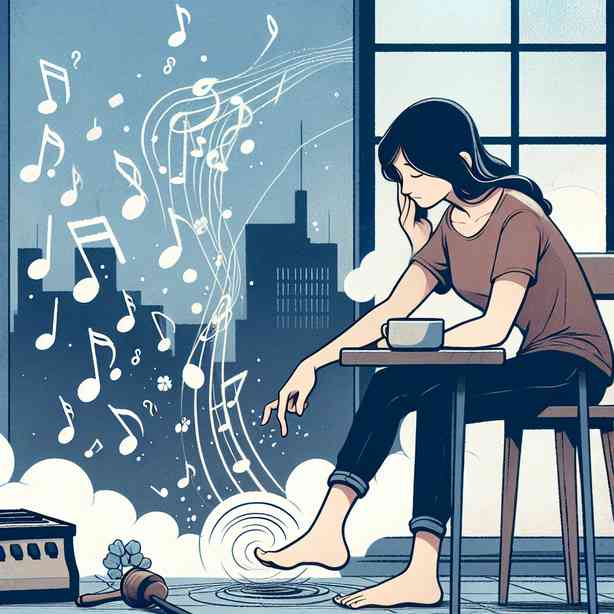
When You Tap the Beat Without Realizing
The unconscious nature of rhythm can be quite fascinating. Have you ever found yourself tapping your foot or drumming your fingers to a song without even thinking about it? This seemingly automatic behavior is a universal phenomenon that transcends cultural boundaries and is deeply rooted in our biology. Understanding why we tap to the beat can provide a deeper insight into the ways music interacts with our minds and bodies.
Starting with the basics, rhythm serves as the backbone of music. It’s a structured pattern of sounds and silences that can evoke various emotions and create an atmosphere that resonates with listeners. Our brains are wired to respond to rhythm, making tapping a spontaneous reaction to auditory stimuli. This response showcases our innate connection to music, as well as the role rhythm plays in human interaction.
Research shows that humans have an exceptional ability to perceive and internalize rhythmic patterns from a very young age. Infants display remarkable sensitivity to rhythmic cues, illustrating that this connection to rhythm is inherent. This ability to pick up on rhythm can significantly influence our social interactions, as tapping along with others encourages bonding and synchrony. Whether it’s clapping at a concert or moving in sync with a group, these rhythmic interactions foster community and shared experiences.
Moreover, tapping to the beat is not just a social phenomenon but also has significant cognitive implications. When we tap along with music, our brains engage in a complex interplay of timing, coordination, and motor control. Studies have shown that this engagement enhances our cognitive functions, enabling better focus and memory retention. Essentially, when you feel the urge to tap your foot or nod your head, your brain is actively participating in the musical experience, integrating movements with auditory stimuli.
In addition to cognitive benefits, tapping can also serve as a form of self-expression. For many, music is not just something to listen to—it is an avenue for emotional expression and creativity. Through tapping and moving to the beat, individuals can convey feelings that might be difficult to articulate with words. This raw form of expression is often spontaneous, giving rise to a deeper connection with the music itself and even reflecting personal experiences or emotions.
Furthermore, this biological inclination to tap indicates the power of rhythm in our lives beyond mere enjoyment of music. Rhythmic activities, such as dancing or drumming, have been shown to reduce stress, improve mood, and even enhance physical health. Engaging with rhythmic music can release endorphins, the neurotransmitters associated with pleasure, thus creating a feeling of happiness and well-being. It’s no wonder that many therapeutic practices leverage the power of rhythm as a method to promote healing and emotional balance.
Rhythmic activities have also been found to foster communication skills. For instance, studies have demonstrated that children who participate in rhythmic play tend to develop language skills more rapidly. By tapping along with music, these children learn to listen closely, follow patterns, and anticipate sounds, which all contribute to linguistic development. Thus, tapping is not merely a physical response; it’s an essential tool for learning and communication.
Interestingly, tapping the beat can also influence our perception of time. When engaged with familiar rhythms, our brains create a mental representation of time that can alter how we experience it. Some researchers propose that rhythmic music can make time seem to pass more quickly, while more subdued or irregular rhythms can elongate our sense of time. This phenomenon is fascinating because it opens up a dialogue about how rhythm can shape not only our auditory experiences but also our perception of reality.
As we delve deeper into the world of tapping, it’s essential to recognize the cultural implications of this behavior. Different cultures express rhythm in unique ways, with specific instruments and traditional dances that reflect their heritage. Tapping, therefore, can signify not only individual engagement with music but also collective cultural identity. This cross-cultural aspect enriches our understanding of rhythm and highlights its importance in expressing social values, history, and community cohesion.
In contemporary society, with the rise of digital music and streaming platforms, the way we tap and engage with music has evolved further. The ease of access to a multitude of genres allows for a more diverse interaction with rhythm. Now, spontaneous tapping can happen anywhere—from commutes to home workouts—showing how ingrained this behavior is in our daily lives. The fusion of technology and music continues to shape the ways we experience rhythm, leading to innovations in music-making programs that encourage users to tap along with beats or create their own rhythmic patterns.
Despite the advances in technology, the fundamental urge to tap the beat remains constant. The communal experience of music, the undeniable rhythm in our lives, and the physiological responses tied to tapping help create a shared understanding of human expression. In this sense, tapping the beat becomes a language of its own, a universal dialect that communicates emotions, social connections, and even cultural heritage.
In conclusion, tapping the beat without realizing it is a multifaceted behavior that encapsulates the essence of human interaction with music. From cognitive and emotional benefits to cultural significance and social bonding, the act of tapping serves as a reminder of our innate connection to rhythm. As we continue to explore our relationship with music, tapping will undoubtedly remain a vital thread in the fabric of our collective human experience. Embracing this spontaneous rhythm offers not only personal joy but also deepens our understanding of the rich, interconnected world of music and its profound influence on who we are.


